#ousamequin
Text

Alexander or Wamsutta or else Sepaquitt. Their Mark.
Pokanoket, Wampanoag. His homelands across the southeastern coasts of the places commonly called Massachusetts and Rhode Island. Leader of the Wampanoag confederacy upon the death of his father, Ousamequin in 1661. Suspected by colonizers of Mass. Bay colony of colluding with the Narragansett against them; Wamsutta also angered European settlers in Massachusetts because of his land transactions with settlers in so-called Rhode Island. Wamsutta died suspiciously in 1662 after being detained and questioned by English settlers.
Their kin: A partner, Namumpum or Weetamoo. Their father Ousamequin, the Massasoit. Brothers Pometacom (or Philip) and Sonkanuhoo; sisters Amie and another whose name I am so far uncertain of.
This deed signed by Wamsutta on January 20, 1661, for lands bounded by the so-called “Seven Mile River ….southward till it come to the main sea, and then to run by the sea westward to Seconet.” John Sassamon is listed as “Interpreter Indian” at the signing of the deed.
#Seen at the Massachusetts State Archives.#wampanoag#pokanoket#wamsutta#alexander#sepaquitt#theirmark#theirmarks#easternwoodlands#nativehistory#sachem#17thcentury#firstindianwar#massstatearchives#massachusetts#rhodeisland#weetamoo#ousamequin#algonquian#namumpum#pometacom#johnsassamon
3 notes
·
View notes
Text
In their first encounter with the Wampanoag people, the Pilgrims stole from the tribe’s winter provisions -- it wasn’t until later that Ousamequin formed an alliance between the groups. Even then, the alliance really only existed because the Wampanoag people were ravaged by diseases brought by European colonizers in the years prior. It was less about intercultural harmony and more about survival (made necessary by the actions of these settlers).
That first harvest was followed by deadly conflicts between colonizers and Native people, including (but definitely not limited to) the Wampanoags. The Europeans repaid their Native allies by seizing Native land and imprisoning, enslaving, and executing Native people.
69 notes
·
View notes
Photo
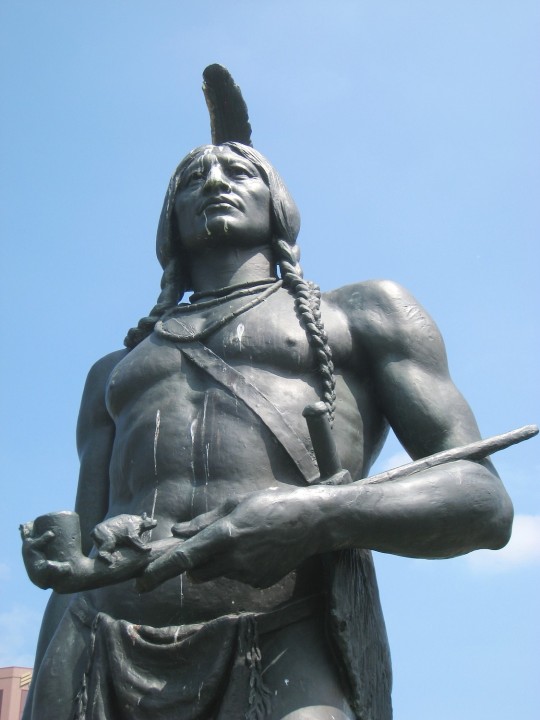
Massasoit
Massasoit (c. 1581-1661) était le sachem (chef) de la confédération Wampanoag de l'actuelle Nouvelle-Angleterre, aux États-Unis. Massasoit est un titre qui signifie Grand Sachem; son nom de naissance était Ousamequin de la tribu Pokanoket de l'actuel Rhode Island et Massachusetts.
Lire la suite...
6 notes
·
View notes
Text
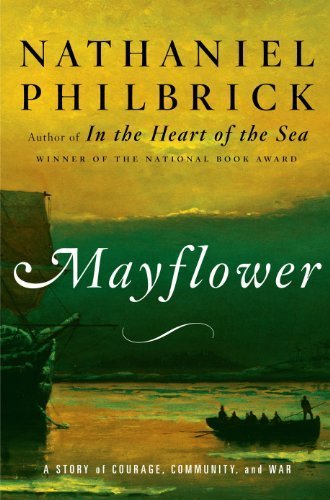



Happy Thanksgiving!
Learn more about the complicated history of this holiday with these nonfiction recommendations.
Mayflower by Nathaniel Philbrick
How did America begin?
This simple question launches acclaimed author Nathaniel Philbrick on an extraordinary journey to understand the truth behind our most sacred national myth: the voyage of the Mayflower and the settlement of Plymouth Colony. As Philbrick reveals in this electrifying new book, the story of the Pilgrims does not end with the First Thanksgiving; instead, it is a fifty-five-year epic that is at once tragic and heroic, and still carries meaning for us today.
This Land is Their Land by David J. Silverman
In March 1621, when Plymouth's survival was hanging in the balance, the Wampanoag sachem (or chief), Ousamequin (Massasoit), and Plymouth's governor, John Carver, declared their people's friendship for each other and a commitment to mutual defense. Later that autumn, the English gathered their first successful harvest and lifted the specter of starvation. Ousamequin and 90 of his men then visited Plymouth for the “First Thanksgiving.” The treaty remained operative until King Philip's War in 1675, when 50 years of uneasy peace between the two parties would come to an end.
400 years after that famous meal, historian David J. Silverman sheds profound new light on the events that led to the creation, and bloody dissolution, of this alliance. Focusing on the Wampanoag Indians, Silverman deepens the narrative to consider tensions that developed well before 1620 and lasted long after the devastating war-tracing the Wampanoags' ongoing struggle for self-determination up to this very day.
This unsettling history reveals why some modern Native people hold a Day of Mourning on Thanksgiving, a holiday which celebrates a myth of colonialism and white proprietorship of the United States. This Land is Their Land shows that it is time to rethink how we, as a pluralistic nation, tell the history of Thanksgiving.
We Gather Together by Denise Kiernan
From Ancient Rome through 21st-century America, bestselling author Denise Kiernan brings us a biography of an idea: gratitude, as a compelling human instinct and a global concept, more than just a mere holiday. Spanning centuries, We Gather Together is anchored amid the strife of the Civil War, and driven by the fascinating story of Sarah Josepha Hale, a widowed mother with no formal schooling who became one of the 19th century’s most influential tastemakers and who campaigned for decades to make real an annual day of thanks.
Populated by an enthralling supporting cast of characters including Frederick Douglass, Abraham Lincoln, Sojourner Truth, Walt Whitman, Norman Rockwell, and others, We Gather Together is ultimately a story of tenacity and dedication, an inspiring tale of how imperfect people in challenging times can create powerful legacies.
Thanksgiving by Melanie Kirkpatrick
We all know the story of Thanksgiving. Or do we? This uniquely American holiday has a rich and little-known history beyond the famous Pilgrim feast of 1621.
Melanie Kirkpatrick journeys through four centuries to craft a vivid portrait of our nation's best-loved tradition in Thanksgiving: The Holiday at the Heart of the American Experience. Drawing on newspaper accounts, official documents, private correspondence, and cookbooks, she illuminates what the holiday has meant to generations of Americans.
Presidents play key parts: Washington proclaimed our first national day of Thanksgiving amid controversy over his constitutional power to do so. Lincoln aimed to heal a fractured nation when he called for all Americans to mark a Thanksgiving Day. FDR sparked a debate on states’ rights by changing the traditional date of the holiday. The story also includes the evolution of Thanksgiving dinner, how football became part of the celebration, and how Native Americans view the holiday.
While the rites and rituals have evolved, the essence of Thanksgiving remains the same: family and friends feasting together in a spirit of hospitality and gratitude. Kirkpatrick's exploration of America’s oldest tradition offers a fascinating look into the meaning of the holiday we celebrate on the fourth Thursday of November.
#history#thanksgiving#nonfiction#reading recs#reading recommendations#book recs#book recommendations#library books#tbr#tbr pile#to read#book tumblr#booklr#book blog#library blog#readers advisory
5 notes
·
View notes
Photo

Massasoit Sachem
Massasoit Sachem or Ousamequin was the sachem or leader of the Wampanoag confederacy. Massasoit means Great Sachem. Massasoit was not actually his name but a title. English colonists mistook Massasoit as his name and it stuck.
#native americans#famous native americans#tributes#statues#travel america#travel photography#muttball
6 notes
·
View notes
Note
Yes, they should. But Thanksgiving has nothing to do with it, to 'celebrate' it or otherwise. / The problem is the myth now tied to Thanksgiving, which I agree is not accurate, covers up the truth. It's portrayed as this friendly gathering between Pilgrims and Native Americas rewriting the truth.
"Nor did the Pilgrims extend a warm invitation to their Indian neighbors. Rather, the Wampanoags showed up unbidden. And it was not simply four or five of them at the table, as we often imagine. Ousamequin, the Massasoit (name for the chief), arrived with perhaps ninety men—more than the entire population of Plymouth. Wampanoag tradition suggests that the group was in fact an army, honoring a mutual-defense pact negotiated the previous spring. They came not to enjoy a multicultural feast but to aid the Pilgrims: hearing repeated gunfire, they assumed that the settlers were under attack. After a long moment of suspicion (the Pilgrims misread almost everything that Indians did as potential aggression), the two peoples recognized one another, in some uneasy way, and spent the next three days together."
The Wampanoags had repelled invaders until 1620 when they had an epidemic kill off between 75-90% of their tribe. To protect themselves from being attacked by other tribes entered a mutual defense pact with the Pilgrims. Which the Pilgrims repeatedly broke.
The settlers pressed hard to acquire Indian land through “sales” driven by debt, threat, alliance politics, and violence. They denied the coequal civil and criminal jurisdiction of the alliance, charging Indians under English law and sentencing them to unpayable fines, imprisonment, even executions.
Thanksgiving falsely continues the myth of peaceful existence and goodhearted Pilgrims.
0 notes
Photo
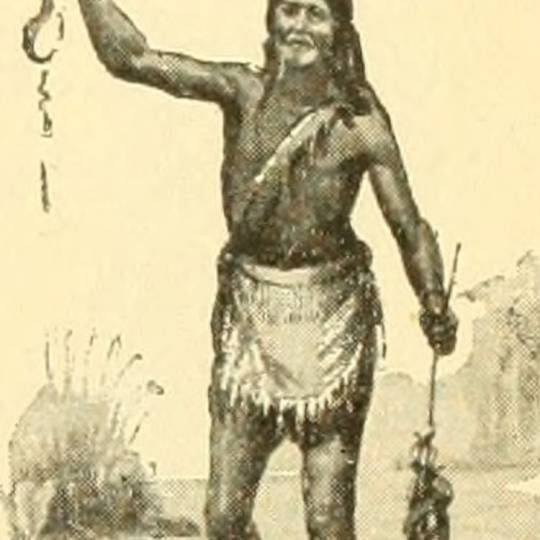
Squanto
Squanto (c. 1585-1622) era el nativo americano de la tribu patuxet que ayudó a los colonos ingleses de la colonia de Plymouth (más tarde conocidos como peregrinos) a sobrevivir en su nuevo hogar enseñándoles a plantar cultivos, pescar y cazar. También se lo conoce como intérprete entre los colonos y los nativos americanos de la Confederación Wampanoag liderada por el jefe Ousamequin, más conocido por su título de Sachem Massasoit (c. 1581-1661). Se cree que el verdadero nombre de Squanto era Tisquantum (como lo llama el colono y cronista Edward Winslow, 1595-1655), mientras que "Squanto" es un apodo que le dio el segundo gobernador de la colonia de Plymouth y su amigo íntimo, William Bradford (1590-1657).
Leer más...
0 notes
Text
Massasoit Sachem or Ousamequin was the sachem or the intertribal chief of the Wampanoag Nation

Massasoit Sachem or Ousamequin was the sachem or the intertribal chief of the half-centuryNation. The Wampanoag, whose people still live in New England today, once had tribal lands that stretched from Cape Cod to Rhode Island. Massasoit means Great Sachem.
In the early 1600s, Massasoit's people had been seriously weakened by a series of epidemics and were vulnerable to attacks by the Narragansetts.
When the Mayflower landed in Massachusetts in 1620, one of the first native leaders the Pilgrims met was Massasoit, he formed an alliance with the colonists at Plymouth Colony for defense against them. It was through his assistance that the Plymouth Colony avoided starvation during the early years.
At first, for the most part, the relationship between the Wampanoag and the Pilgrims was friendly and cooperative. In fact, they signed a treaty in 1621 and the reign of Massasoit marked a 40-year-period of peaceful relations.
The alliance came under other tension in later years, as the colonists expanded into new lands in order to support their growing colony. The half-century of peace that Massasoit so assiduously maintained collapsed soon after his death.
#the royal diaries#Massasoit Sachem#Massasoit#Ousamequin#indigenous people#us history#indigenous peoples#weetamoo#Weetamoo: Heart of the Pocassets
4 notes
·
View notes
Text
This tribe helped the Pilgrims survive for their first Thanksgiving. They still regret it 400 years later.
Dana Hedgpeth
On a hilltop above stood a quiet tribute to the American Indians who helped the starving Pilgrims survive. Few people bother to visit the statue of Ousamequin — the chief, or sachem, of the Wampanoag Nation whose people once numbered somewhere between 30,000 to 100,000 and whose land once stretched from Southeastern Massachusetts to parts of Rhode Island.
Long marginalized and misrepresented in the American story, the Wampanoags are braced for what’s coming this month as the country marks the 400th anniversary of the first Thanksgiving between the Pilgrims and Indians.
145 notes
·
View notes
Text
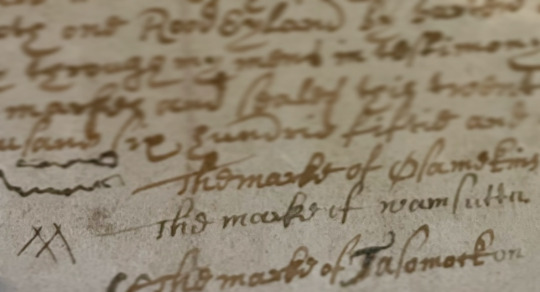
The Mark of Wamsutta.
Following up from last week’s post about Wamsutta: This mark is made on a document from 1651 (on which Ousamequin also appears, and which is also described in a previous post about Ousamequin’s mark). Signed in the time before Wamsutta petitioned settlers for an English name (Alexander). Here, Wamsutta uses a pictograph of a thunderbird as his mark.
Seen at Massachusetts Historical Society.
#wamsutta#ousamequin#pokanoket#wampanoag#massasoit#theirmarks#rhodeisland#massachusetts#easternwoodlands#nativehistory#sachem#17thcentury#masshistorical#algonquian
2 notes
·
View notes
Note
So maybe this is a dumb question but what’s wrong with Thanksgiving? I was always taught it was about giving thanks that the pilgrims survived with the help of the Indians? I would like to be educated on why it’s racist? Or insensitive? I’m genuinely asking this and would like to learn! Thank you! 😊
Sorry this took me forever to see but boy howdy am I excited to teach you the correct history!! Time to learn about the bullshit holiday on December 1st! lol
Alright so! Your educators were lying to you. The story you were taught is that some Indians, who could speak English for no reason, helped the Pilgrims out some then just fucking disappeared. They just left and let the white people claim their land. Bullshit, all bullshit.
Let’s start with this. All Native American history didn’t start with white people showing up. They were here for soo long, but no really cares about their history before the colonies showed up. It’s so sad that no one is taught their rich and amazing history in school.
The tribe in the story is the Wampanoag Tribe, not some “Unnamed Tribe.” Anyways, once the colonizers showed up the leader of the Wampanoag Tribe, Ousamequin, reached out to the people of Plymouth. Not because he was some friendly guy that wanted new friends. No, he wanted an alliance with the English because his people were being wiped out by disease that the colonies had given to them. He saw the English people of Plymouth as an opportunity to fend off his tribal rebels. Ousamequin wanted their help! But he didn’t exactly get that.
Also how did the tribe get the disease without meeting the colonizers?? The answer is they fucking knew white people already! The leader and a few other members of the Wampanoag tribe spoke English because they used to be ENSLAVED. We don’t have time to impack all that though.
The dumb myth you’re taught in school also leaves out something huge!! The alliance falling apart, leading to one of the most horrific colonial Indian wars on the god damn records. Also! Some think the Wampanoag Tribe disappeared after this horrible war! But they fucking didn’t. Those strong hearted people survived and adapted, even after the pain and suffering they went through. That’s why they still exist and hate this fucking holiday.
I bet you’re wondering; “why?? “Why didn’t we learn the real story?!” Well!! Thanksgiving was originally was about fasting, prayer, and supplication to the Christian god. There was no fucking feast. Around 1769 ish, the descendants of the original colonizers felt like their culture authority was deteriorating. All because New England wanted to boost tourism and wanted to become focused on the relevance of the early republic and not the colonies. So they made up some elaborate story, claiming that the pilgrims were the fathers of America! The word of the great feast spread quickly, and during the Civil War it finally became a holiday.
So what you learned in school was a load of bullshit made up by a bunch of greedy, power hungry, racists. Please educate yourselves people, learn the true culture of the Native Americans and don’t be blinded by the racists!
I self educated myself on this topic, I suggest you all do the same. If anyone wants to add anything, please do.
If the American Education system won’t teach you anything, teach yourself.
78 notes
·
View notes
Photo
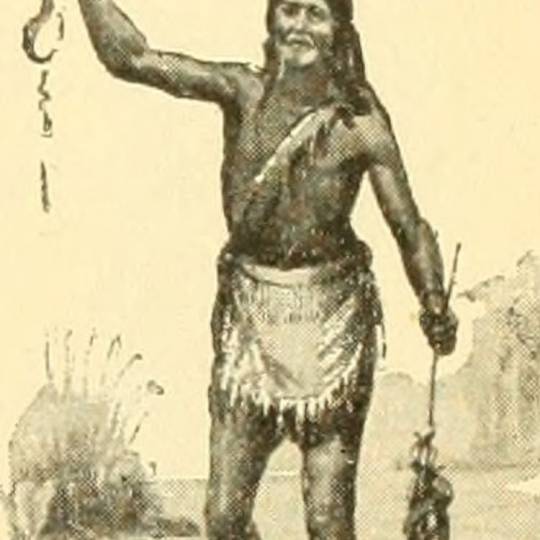
Squanto
Squanto (c. 1585-1622) était l'Amérindien de la tribu Patuxet qui aida les colons anglais de la colonie de Plymouth (plus tard connus sous le nom de pèlerins) à survivre dans leur nouveau "chez eux" en leur apprenant comment planter des cultures, pêcher et chasser. Il est également connu comme interprète entre les colons et les autochtones de la confédération Wampanoag dirigée par le chef Ousamequin, plus connu sous le nom de Sachem Massasoit (c. 1581-1661). Le vrai nom de Squanto aurait été Tisquantum (comme l'appelle systématiquement le colon et chroniqueur Edward Winslow, 1595-1655), tandis que "Squanto" est un surnom que lui donna le deuxième gouverneur de la colonie de Plymouth, et son ami intime, William Bradford (1590-1657).
Lire la suite...
2 notes
·
View notes
Text
Tribal chief who signed treaty with Pilgrims to be reburied

PROVIDENCE, R.I. (AP) — The remains of the Wampanoag leader who forged a peaceful relationship with the Pilgrims will be reburied at his original gravesite in Rhode Island.
Members of the Wampanoag Nation have spent 20 years tracking down the remains and artifacts of Massasoit Ousamequin. It was their "spiritual and cultural obligation," said Ramona Peters, who coordinated the effort.
Ousamequin signed the first treaty with the Pilgrims after they arrived on the Mayflower, promising in 1621 in the village that became Plymouth, Massachusetts, to protect each other, according to the Wampanoags. The peace lasted for decades.
Ousamequin was buried on a hilltop in Warren overlooking Narragansett Bay. His remains and artifacts were scattered when a railroad was built through the burial site nearly two centuries after his death and archaeologists and local residents dug there. Read more.
544 notes
·
View notes
Text
"David Silverman, in his personal reflections, considers how two secular patriotic hymns, “This Land Is Your Land” and “My Country ’Tis of Thee,” shaped American childhood experiences. When schoolkids sing “Land where my fathers died! Land of the Pilgrim’s pride,” he suggests, they name white, Protestant New England founders. It makes no sense, these days, to ask ethnically diverse students to celebrate those mythic dudes, with their odd hats and big buckles. At the very least, Silverman asks, could we include Indians among “my fathers,” and pay better attention to the ways they died? Could we acknowledge that Indians are not ghosts in the landscape or foils in a delusional nationalist dream, but actual living people?
This sentiment bumps a little roughly against a second plea: to recognize the falsely inclusive rhetoric in the phrase “This land is your land, this land is my land.” Those lines require the erasure of Indian people, who don’t get to be either “you” or “me.” American Indian people are at least partly excluded from the United States political system, written into the Constitution (in the three-fifths clause and the Fourteenth Amendment, for example, where they appear as “Indians not taxed”) so as to exist outside it. Native American tribes are distinct political entities, sovereign nations in their own right.
“American Indian” is a political identity, not a racial one, constituted by formal, still living treaties with the United States government and a long series of legal decisions. Today, the Trump Administration would like to deny this history, wrongly categorize Indians as a racial group, and disavow ongoing treaty relationships. Native American tribal governments are actively resisting this latest effort to dismember the past, demanding better and truer Indian histories and an accounting of the obligations that issue from them. At the forefront of that effort you’ll find the Mashpee Wampanoags, those resilient folks whose ancestors came, uninvited, to the first “Thanksgiving” almost four centuries ago in order to honor the obligations established in a mutual-defense agreement—a treaty—they had made with the Pilgrims of Plymouth Colony."
- Philip Deloria, The Invention of Thanksgiving (The New Yorker)
#Thanksgiving#the myth of America#colonizers#pilgrims#native americans are still here#native american heritage month#the Wampanoags#Ousamequin#Pumetacom#Reverend Alexander Young#Sarah Josepha Hale#Abraham Lincoln#the civil war#imperialist nostalgia#King Philip#King Philip's War
0 notes
Link
Officials in Cambridge, MA, which is known for its progressive politics, have removed the Massachusetts state flag from city hall. The flag features an image of the Native American leader Massasoit (aka Ousamequin) with the arm of Myles Standish holding a sword at the top.
Rob DiRienzo reports at FOX News:
Cambridge removes ‘offensive’ Massachusetts flag from City Hall as calls grow to replace it
As the 400th anniversary of the Mayflower’s landing approaches next year, there is a growing push to change the Massachusetts state flag because of its depiction of a Native American.
At least 30 municipalities have endorsed a state bill to remove and replace the state’s flag and motto. Cambridge, the fifth largest city in the state, went even further — earlier this month city council members labeled it “offensive” and approved a proposal to remove the state flag from council chambers.
“I found out that there is a lot of imagery on the state flag that I didn’t actually know existed,” said Massachusetts State Rep. Nika Elugardo, who is co-sponsoring the state resolution to replace the flag.
The flag features a Native American holding a bow and arrow. Just overhead is a disembodied arm with a sword. Surrounding the seal is the phrase “Ense petit placidam sub libertate quietem,” which roughly translates from Latin to, “By the sword we seek peace, but peace only under liberty.”…
Most objections aren’t with Ousamequin, but the arm and sword overhead. They are said to belong to Myles Standish, an English military officer who helped establish and secure the Plymouth colony.
The local news program “Greater Boston” did a recent report on this which you can watch below. You’ll be astounded to learn that they somehow managed to tie this effort to the Trump presidency.......
============ read more at the link ===========
They have an issue with the arm......

2 notes
·
View notes
Text
Because I always get at least one person screaming that I'm a pretendian when I post pix of myself in regalia:
Ousamequin Massasoit married Sauks Pokanoket
Mionamie Massasoit, daughter of Ousamequin and Sauks, married “Black Sachem” Tusquapin.
Wamsutta "King Alexander" Massasoit, son of Ousamequin Massasoit, married Weetamoo Namumpum Tatapanunum, daughter of Corbitant.
Amie and Tusquapin’s son Benjamin "Pamataquash" Tuspaquin married Wamsutta and Weetamoo’s daughter Weecum Quinnapin. (First cousin marriage, great for when most of the hot singles near you have been murdered in King Philip’s War)
Benjamin Tuspaquin II - son of Benjamin Tuspaquin and Amie Massasoit, married Mercy Felix - daughter of Awonta "Matwatcka" Felix and Betty "Assawetough" Sassamon (who was daughter of John “Wussausmon” Sassamon)
Lydia Tusquapin, daughter of Benjamin II and Mercy, married Isaiah Sawess Walmsley (Mohegan)
Paul Walmsley, son of Lydia and Isaiah, married Phoebe Jeffries
John F. Walmsley, son of Paul and Phoebe, married Mary L. Freeman
Selina Cornelius Walmsley, daughter of John and Mary, married Harrison Gray Otis Lincoln
Emma Jane Lincoln, daughter of Selina and Harrison, married Daniel B. Smith
William Elmer Smith, son of Emma Jane and Daniel, married Ora Maud Elderkin (The Elderkin line also ties back to Wampanoag folks in the 1700’s, specifically Ruth Noquochoke Moses, who married Kofi "Cuffe" Slocum, who was originally from Ghana)
Daniel Elmer Smith, son of William and Ora Maud, married Rita C Bessette
Eva Marie Smith, daughter of Daniel and Rita, married William K. Poirier
I, Monique Poirier, am the daughter of Eva and William
Which makes Ousamequin Massasoit my 10th Great-Grandfather…. Twice.


#ndn#regalia#also I was raised in the culture and have been attending events at thr RI indian council since I was tiny#And I'm currently the web designer and one half of the media committee in a state recognized tribe#but blood quantum fuckers Don't really care about continuity of culture
22 notes
·
View notes